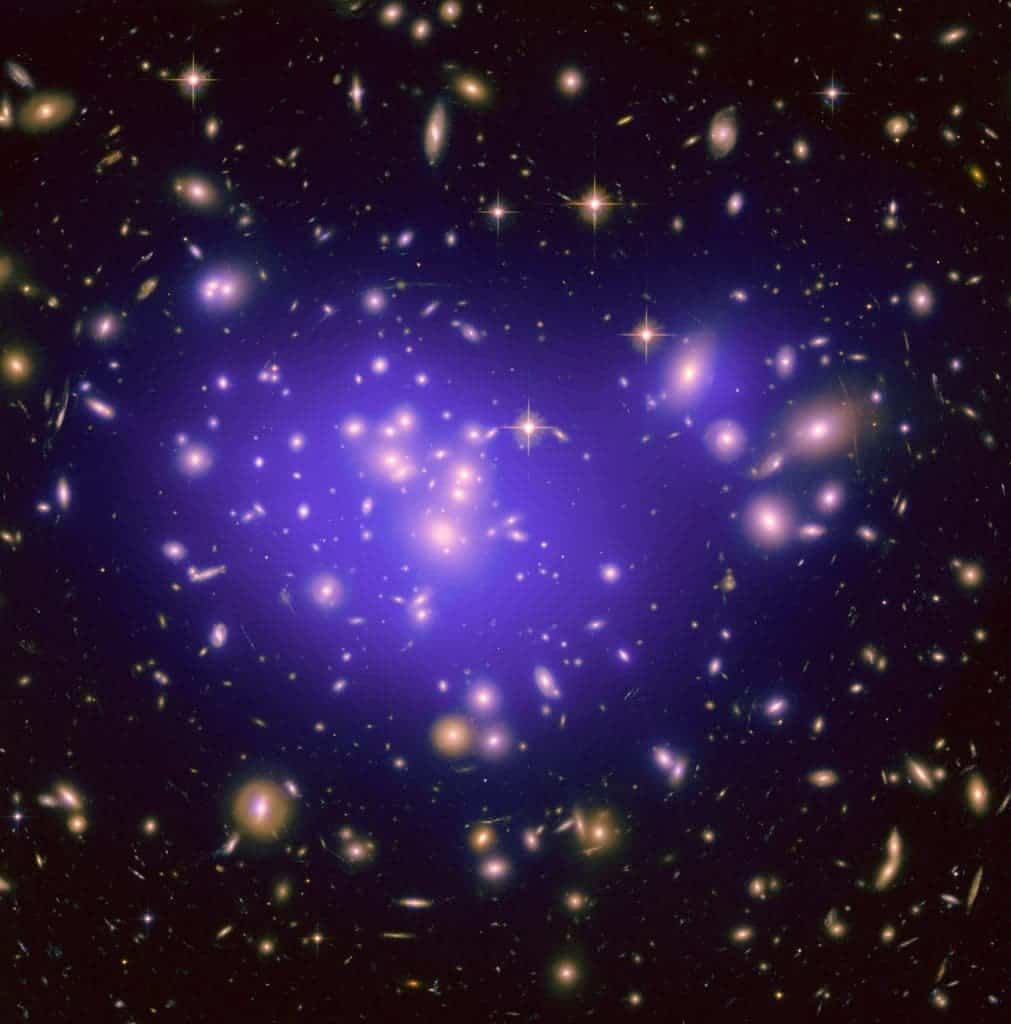Many people change a lot after their youth… and so to did our Universe. Nowadays, galaxies contain both dust and gas, but back in the early Big-Bang days, the earliest galaxies had no dust, only gas. Now, a team of astronomers has discovered a very young galaxy with lots of dust – the equivalent of a white-bearded young man.

Dust plays an extremely important, both in planetary and in star formation – it basically acts like a seed, “fertilizing” galaxies for celestial body formation. Cosmic dust are smoke-like particles made up of either carbon (you can consider it a fine soot) or silicates (a fine sand). The elements in dust are synthesised by the nuclear combustion process in stars and driven out into space when the star explodes. These remains then gather into dust clouds, which form new stars and new elements, thus perpetuating the cycle. It’s a very slow process, and it seems that the older a galaxy gets, the more dust it tends to have.
But dust was not around from the beginning; in the early stages of the Universe, gas filled the galaxies, and dust was nowhere to be found… or at least so we thought. Now, a team has found a very distant, young galaxy with a large amount of dust, challenging our previous understanding of early galaxies.
“It is the first time dust has been discovered in one of the most distant galaxies ever observed — only 700 million years after the Big Bang. It is a galaxy of modest size and yet it is already full of dust. This is very surprising and it tells us that ordinary galaxies were enriched with heavier elements far faster than expected,” explains Darach Watson, an astrophysicist with the Dark Cosmology Centre at the Niels Bohr Institute at the University of Copenhagen.
Under normal circumstances, astronomers wouldn’t even have been able to detect this galaxy – it’s so far away and faint – but a fortunate circumstance allowed them to visualize it. In between the Earth and this galaxy, there is a large cluster of galaxies called Abell 1689. The light is refracted by the gravity of the galaxy cluster, thus amplifying the distant galaxy – basically acting like a magnifying glass. The technique is called gravitational lensing. Astronomers explain:
“We looked for the most distant galaxies in the universe. Based on the colours of the light observed with the Hubble Space Telescope we can see which galaxies could be very distant. Using observations from the very sensitive instrument, the X-shooter spectrograph on the Large Telescope, VLT in Chile, we measured the galaxy’s spectrum and from that calculated its redshift, i.e. the change in the light’s wavelength as the object recedes from us. From the redshift we can calculate the galaxy’s distance from us and it turned out to be, as we suspected, one of the most distant galaxies we know of to date,” explains Lise Christensen, an astrophysicist at the Dark Cosmology Centre at the Niels Bohr Institute.
Astronomers are capable of telling which galaxies are younger by observing the wavelengths at which they emit light. Younger galaxies emit much more hot ultraviolet light. The hot ultraviolet radiation heats the surrounding ice-cold dust, which then emits light in the far-infrared.
“It is this far-infrared light, which tells us that there is dust in the galaxy. It is very surprising and it is the first time that dust has been found in such an early galaxy. The process of star formation must therefore have started very early in the history of the universe and be associated with the formation of dust. The detection of large amounts of solid material shows that the galaxy was enriched very early with solids which are a prerequisite for the formation of complex molecules and planets,” explains Darach Watson.
Now, the next step is figuring out how dust “colonized” the early galaxies, something which might potentially reveal how this process is shaping up the Universe now.
Story: the above story is based on materials provided by University of Copenhagen – Niels Bohr Institute



